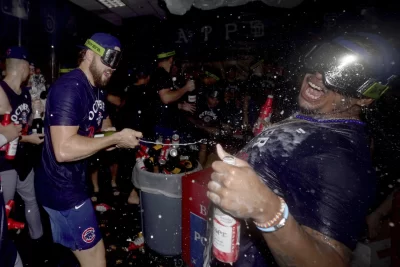
COLUMBIA, S.C. — When the clock strikes 6 Friday evening, a South Carolina man will walk into the death chamber, be strapped into a chair and have a target placed over his heart. He may utter last words before a hood is placed over his head, a curtain shielding him from spectators is swept aside and three volunteers armed with rifles simultaneously fire bullets designed to shatter on impact with his chest.
Unless the governor or the U.S. Supreme Court grants him a last-minute reprieve, Brad Sigmon, 67, will be the first person to die by firing squad in the U.S. since 2010 — and just the fourth since the death penalty resumed in the U.S. 49 years ago.
Sigmon, who admitted to killing his ex-girlfriend’s parents with a baseball bat after she refused to come back to him, said he chose to die by bullets because he considered the other choices offered by the state to be worse.
His lawyers said he didn’t want to pick the electric chair, which would “cook him alive,” or a lethal injection, whose details are kept secret in South Carolina. He also feared an injection of pentobarbital into his veins would send a rush of fluid into his lungs and drown him. On Thursday, Sigmon asked the U.S. Supreme Court to delay his execution because the state doesn’t release enough information about the lethal injection drug.
The firing squad has a long and violent history
The death row inmate’s only remaining choice was a firing squad, an execution method with a long and violent history in the U.S. and around the world. Death in a hail of bullets has been used to punish mutinies and desertion in armies, as frontier justice in America’s Old West and as a tool of terror and political repression in the former Soviet Union and Nazi Germany.
In recent years, however, some death penalty proponents have started to see the firing squad as a more humane option: If the shooters’ aim is true, death is nearly instant, whereas lethal injections require getting an IV into a vein. Electrocution appears to burn and disfigure. And inmates have been seen to writhe and struggle when the latest method, nitrogen gas, is used to suffocate them as it is pushed through a mask.
Ronnie Gardner was the last prisoner to be executed by firing squad, in Utah in 2010. His brother doesn’t agree the method is more humane.
“This will be gruesome and barbaric,” Randy Gardner said. He said he didn’t witness his brother’s death but carries his autopsy photos in an envelope. He pulled several out to show an Associated Press reporter who will witness Friday’s execution.
“With the ammunition they are using here (in Sigmon’s execution) it is going to be so much worse,” Gardner said.
Inside the execution chamber
The chamber inside which Sigmon will die is just a short walk from South Carolina’s death row, where the prisoner has lived for the past 23 years.
When the curtain opens Friday evening, Sigmon’s lawyer, family members of the victims and three members of the news media will watch from behind glass recently upgraded to be bullet resistant.
The shooters will be 15 feet (4.6 meters) away — the length from the backboard to the free-throw line on a basketball court.
Moments after the hood is placed over Sigmon’s head, three trained volunteers will shoot at the same time.
Each will be armed with .308-caliber, Winchester 110-grain TAP Urban ammunition often used by police marksmen. The bullet is designed to shatter on impact with something hard, like an inmate’s chest bones, sending fragments meant to destroy the heart and cause death almost immediately.
A short time later, a doctor will confirm Sigmon is dead. At most, the process will take five minutes — a quarter of the time needed for a lethal injection.



